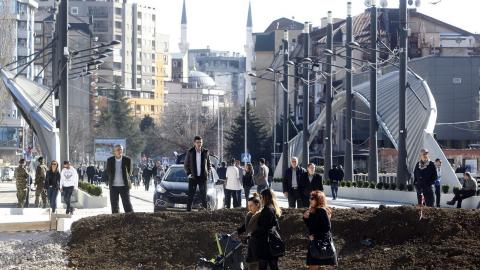University Pumps Fresh Blood into North Kosovo

Some 40 per cent of the entire student body comes from outside Kosovo, with some 30 per cent hurdling the border/boundary from central and southern Serbia, from towns such as Kragujevac, Kraljevo, Valjevo, and Niš. Then there are Serbs from both Croatia and Bosnia and Herzegovina, respectively, or students from Montenegro and the Republic of North Macedonia. Tuition is free for those with Serbian citizenship, or declared as being of Serb nationality in another state. There are other members of the non-majority community from throughout Kosovo who speak "Serbo-Croat" (the preferred name for the language amongst linguistic purists), plus a smattering of Albanians from Bujanovac, Preševo, and Medveđa in south-west Serbia. Unsurprisingly, Mitrovica is served by frequent coaches that once departed from makeshift stopping points throughout the town, before someone had the good sense to build a fully functioning coach station; though I do miss the cry of random place names as ticket sellers targeted potential passengers on the pavements.
For most new student arrivals, it is their first experience of a territory regarded by many Serbs as the heart of their country; though a heart that neither they nor their friends and family will likely have ever visited. Though understandable, given Kosovo's recent history and lingering concerns about security, it is still striking the number of people who proclaim an interest but have never made a voyage to what they and many others still regard as Serbia's southern province. One of the much-vaunted examples of post-World-War-Two peacebuilding - aside of course from what we now know as the European Union - pertains to exchanges between French and German students and young adults. Hundreds of thousands of individual visits - some...
- Log in to post comments








